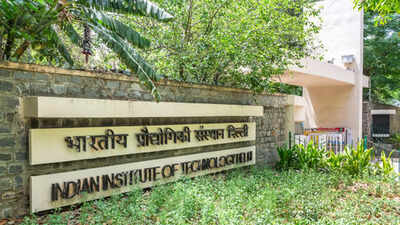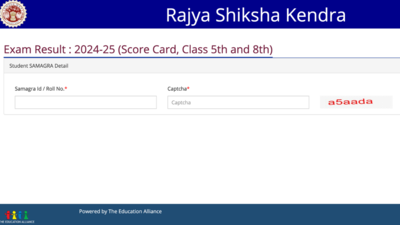Which IITs made it to the QS World University Rankings 2026? A comparative analysis of their performance this year

The QS World University Rankings 2026, released on June 18, 2025, by Quacquarelli Symonds (QS), have once again showcased the competitive landscape of higher education worldwide. This year’s edition assessed over 1,500 universities from 106 locations, making it the most comprehensive ranking to date. The Massachusetts Institute of Technology (MIT) has maintained its place at the summit of global academia, securing the number one position with a perfect overall score of 100. Following MIT, Imperial College London and Stanford University secured the second and third spots respectively, marking a strong presence of North American and European universities in the global top ten.India has also made significant strides, with 54 universities featured in the QS rankings. Leading this contingent are the Indian Institute of Technology Delhi (IIT Delhi), Indian Institute of Technology Bombay (IIT Bombay), and Indian Institute of Technology Madras (IIT Madras), ranking 123rd, 129th, and 180th globally respectively. This marked progress reflects India’s expanding footprint on the global academic map and underscores the continuing rise of its premier institutions.The legacy and strengths of IITs in IndiaThe Indian Institutes of Technology (IITs) form the cornerstone of India’s technological education and research since their inception. The first IIT was established in 1951 at Kharagpur, and over the decades, the network has grown to encompass 23 institutes across the country. Each IIT boasts distinct strengths, but all share a commitment to excellence in engineering, technology, and science education.IIT Delhi, established in 1961, is often regarded as the flagship institute of the IIT system. Its reputation is bolstered by a robust employer reputation score of 95 and an academic reputation score of 67.9 in the QS rankings 2026. It is renowned for its strong industry linkages and research output, producing graduates who are highly sought after worldwide.IIT Bombay, founded in 1958, combines academic rigour with a vibrant campus culture and close industry collaborations. It ranks just behind IIT Delhi with a high employer reputation score of 97 and academic reputation of 73.3. This institution has consistently been a pioneer in research innovation and entrepreneurship.IIT Madras, set up in 1959, is noted for its rigorous academic programmes and strong research focus, especially in engineering and technology. It recorded an overall score of 58.4 in QS 2026 and has made significant improvements, rising from 227th to 180th in the rankings, indicating its growing global stature.IIT Kharagpur, the first IIT established in 1951, remains a pivotal centre for research and education with a wide range of academic disciplines. With an overall score of 54.5, it continues to build on its legacy of producing top-tier engineers and researchers.Other established IITs like Kanpur (est. 1959), Guwahati (est. 1994), and Roorkee (est. 1847 as Thomason College, later IIT from 2001) hold steady rankings in the mid-200s and 300s, reflecting steady performance and regional academic leadership.Newer IITs such as Indore (2009), BHU Varanasi (2012 merger), Hyderabad (2008), Gandhinagar (2008), and Bhubaneswar (2008) have rapidly gained recognition. Their focus on interdisciplinary research and innovation is reflected in their QS rankings and overall scores, albeit lower than the older IITs, yet demonstrating upward momentum.IITs in QS World University Rankings 2026: Detailed data
Comparative analysis of IITs in QS 2026The rankings clearly indicate that IIT Delhi and IIT Bombay maintain their dominance in both academic and employer reputation, highlighting their status as India’s premier technological institutions. IIT Delhi edges ahead with a slightly higher overall score, despite IIT Bombay’s marginally higher employer reputation. IIT Madras’s remarkable rise in rank from 227 to 180 is a testament to its expanding research capabilities and internationalisation efforts.The middle-tier IITs—Kharagpur and Kanpur—display stable performance with overall scores in the mid-50s. These institutes show room for improvement, especially in enhancing their employer reputation and employment outcomes to boost their rankings further.IIT Guwahati and Roorkee, while ranking lower, continue to solidify their roles as key academic centres in their respective regions. Their relatively lower scores in employment outcomes point to potential areas for development, particularly in strengthening industry collaborations and graduate placements.The newer IITs, such as Indore, BHU Varanasi, Hyderabad, Gandhinagar, and Bhubaneswar, are gradually carving their niche. Although their overall scores and reputations are currently modest, these institutions’ focus on innovative curricula and research promises future growth. Notably, IIT Gandhinagar and IIT Bhubaneswar, despite lower scores, benefit from strategic academic plans that emphasise interdisciplinary learning and entrepreneurship.This spectrum of rankings across the IIT system reflects India’s multifaceted approach to expanding quality higher education and research. As established IITs continue to excel, the newer institutes are progressing steadily, collectively raising India’s profile on the global academic stage.





